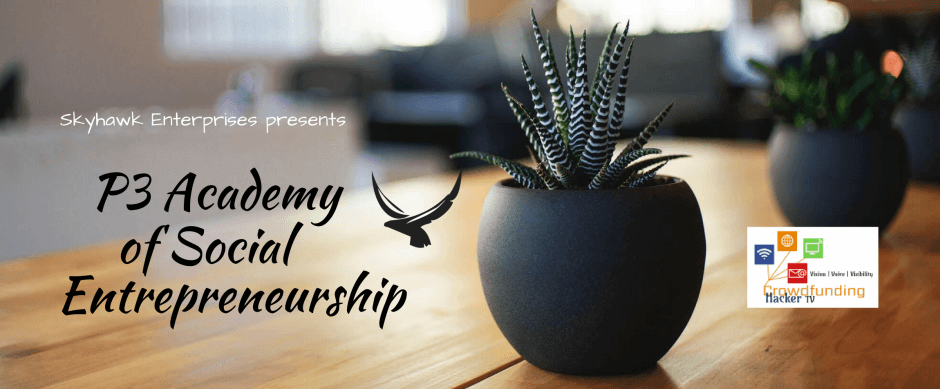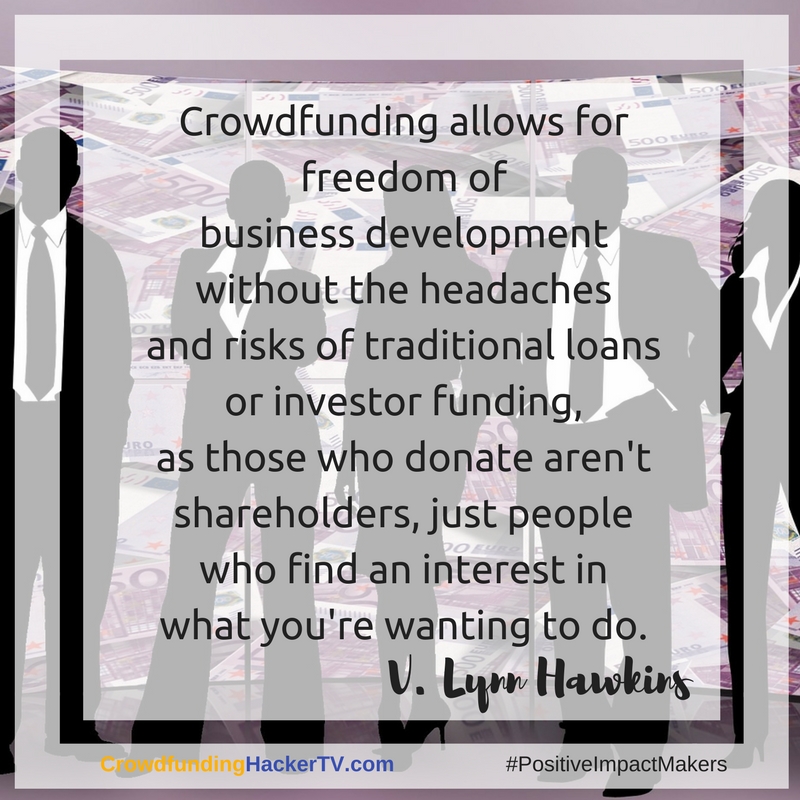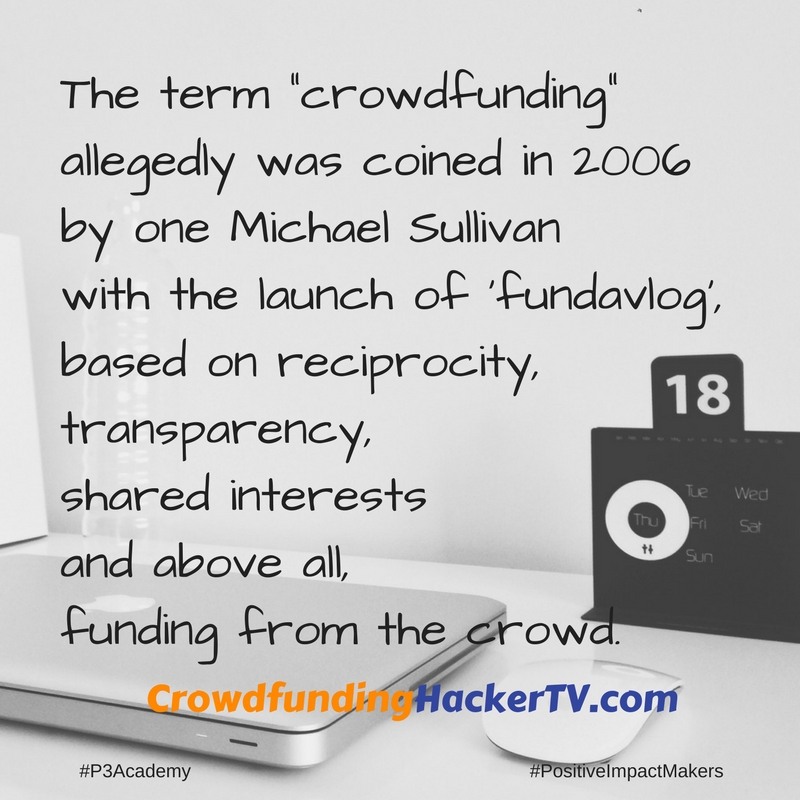To understand the history of Crowdfunding, one must first know what it is. So, here is a recap of a trend in financing that, thanks to the internet, has and is continuing to take the world (especially business world) by storm.
Crowdfunding is basically a way that people, groups and companies can gather funding to launch a project without having to go the traditional routes of getting loans or investors. It basically means you solicit small amounts of money from a large number of people, your fan base or via a website, blog, or social network. Achieving this goal allows for freedom of development without the headaches and risks, as those who donate aren’t shareholders, just people who find an interest in what you’re wanting to do.
The history of this type of solicitation of funds goes back long before the term of “crowdfunding” came into play, however that was before the internet made it easier for people to communicate with people on a global basis. This afforded people and groups to solicit their fans or email list subscribers if they needed a project launched.
In popular times, the Crowdfunding craze is attributed to the success of the musical rock group Marillion who in 1997 had their fans underwrite their entire tour in the United States that year by collecting solicitations for $60,000. That coup was reportedly started by fans. Since then, Marillion and other bands have used the method to pursue their goals.
In film, the French took the high ground as producers Guillaume Colboc and Benjamin Pommeraud got $50,000 from donations for their film projects. Crowdfunding for film projects has increased of late, especially for the urban and documentary film genres.
The term “crowdfunding” allegedly was coined in 2006 by one Michael Sullivan with the launch of fundavlog, a failed attempt at creating an incubator for videoblog-related projects and events, including a simple funding functionality. This scheme was “based on reciprocity, transparency, shared interests and, above all, funding from the crowd,” but the term crowdfunding only really began to be used by the masses a few years later with the advent of the platform Kickstarter.
From then on, the phenomenon had a name and it rapidly turned into a cultural opportunity. It became the public’s time to shine regarding getting alternative sources of funding that didn’t follow the traditional model with all the risks and requirements of lending institutions or funding resource institutions that often had such high and difficult standards, that the small person or the one who wasn’t in on the crony side of business, was left out in the cold.
Now, one could put up a website or blog, interact with social networking sites to promote their projects and if there was interest they could work out their donation status. Soon small companies and some popular artists were able to tap into their fan bases for revenue that the larger companies were already tapping.
This rising form of funding popularity has brought up some issues as to the regulatory laws regarding funding. As the number of micro patronage sites and groups emerged, the threat to mainstream investors became a concern; enough for the Security and Exchange Commission and other bodies to look into the industry to make sure no laws were being broken, as well as to ensure those participating on the donation side don’t get ripped off in the process.
Today, the process has gone through refinement that leads to people from all over the world donating to projects they feel as worthy of their donations. This has led to hundreds of prominent crowdfunding platforms and untold numbers of smaller crowdfunding platforms, including some highly functional website plugins being developed and brought online. People all over the world are getting their projects launched, off the ground and maintained.
Crowdfunding is more than an opportunity for charity organizations. Much of the successful higher profile crowdfunding is done for health issues. The trend which began with business, was almost taken away from business, except non-profits, and has now come full circle, providing an even larger opportunity for business, something called ‘equity crowdfunding’.
As the industry grows and the number of platforms and users grows, the regulatory entities have kept a vigilant watch over things. On April 4, 2012, President Barak Obama signed legislation, the JOBS Act, that allowed for a major turn in investor based contributing to business growth, called ‘equity crowdfunding’. With strict SEC regulations, this type of crowdfunding was not only expensive, it negated the ability for the smaller business to enter this funding resource sector, and many other businesses didn’t pursue crowdfunding in any other way because it has been so misunderstood.
In May 2016, Phase III of the JOBS Act, opened the door with changes to the Act around equity crowdfunding. According to the folks at Crowdfunder, in a blog recent blog article, the changes provided that “everyday citizens can finally invest in early stage startups alongside angels and VCs”, changing the game. There are still SEC requirements for equity based crowdfunding, and while it remains a costly endeavor, crowdfunded amounts and access to investors are far more attainable for start-ups and for staged growth small businesses now. We explain more about equity crowdfunding in a subsequent article, so you can see the pros and cons, and whether it is something you may want to position to pursue.
Those still worried about the general state of crowdfunding and how it will be regulated outside of the SEC’s involvement, can rest assured that the safeguards are in the crowd. The internet allows for people to communicate like never before which is somewhat of a deterrent, as trying to keep tabs on all the crowdfunding going on would be an impossible task.
The history of crowdfunding is an amazing one. It encompasses the old and the new and opens the doors to funding that many people, and most for-profit businesses had no access to before. There was no proven history around crowdfunding for business like there is since 2013 statistics, as well as projections for the future.
Crowdfunding has truly bridged the gap for business between not having the capital resources to do more good in and through business. It has helped many thousands of businesses to get what was needed to launch a product or move their cause. It’s helped entrepreneurial ventures grow staff and business in general, and add their work to what’s being done to better the state of the world.
Moreover, as stated in the Social Media Week article, “One of the results has been a new mindset built on trust and participation, ready to embrace diversity, capable of reinventing itself, and empowered to change the world. Our need to support and get involved in projects we care about is deep rooted in our humanity as much as our tendency to improve things and innovate in order to live better. Crowdfunding can be seen as a natural response to fill the gap left in capital formation and funding models in the modern society.”
*******
ABOUT THE AUTHOR
 Lynn Hawkins is a certified business acceleration coach and small business funding strategist. CEO/Founder of the P3 Academy of Social Entrepreneurship, Lynn helps grow rapid, sustainable businesses through her signature 5 Tiers of Accelerated Business Development. As Co-CEO of PositiveImpactMakers.orgthe focus is on recognizing the growing number of socially conscious businesses, and showcasing entrepreneurs already making an impact in the world using crowdfunding. Lynn is host of the Crowdfunding Hacker WebTV Show and has taken up the mantel as the Crowdfunding Hacker Queen, helping businesses raise capital using crowdfunding. Lynn is an author, speaker and an advocate for growing women and their businesses. She is often caught saying “when you earn more revenue, you can do more good in the world.” She believes in creating a wealth mindset and a living legacy through your work.
Lynn Hawkins is a certified business acceleration coach and small business funding strategist. CEO/Founder of the P3 Academy of Social Entrepreneurship, Lynn helps grow rapid, sustainable businesses through her signature 5 Tiers of Accelerated Business Development. As Co-CEO of PositiveImpactMakers.orgthe focus is on recognizing the growing number of socially conscious businesses, and showcasing entrepreneurs already making an impact in the world using crowdfunding. Lynn is host of the Crowdfunding Hacker WebTV Show and has taken up the mantel as the Crowdfunding Hacker Queen, helping businesses raise capital using crowdfunding. Lynn is an author, speaker and an advocate for growing women and their businesses. She is often caught saying “when you earn more revenue, you can do more good in the world.” She believes in creating a wealth mindset and a living legacy through your work.
RESOURCES:
Michael Sullivan Crowdfunding – Google Search https://www.google.com/search?source=hp&q=michael+sullivan+crowdfunding&oq=michael+sullivan+crowdfunding&gs_l=psy-ab.3..0.1775.9118.0.9328.31.24.5.0.0.0.243.2027.14j6j1.21.0….0…1.1.64.psy-ab..5.26.2087…35i39k1j0i20i264k1j0i131k1j0i22i30k1.0.6Bhbo_zpAA4
A Social History of Crowdfunding” Social Media Week [12/12/11] https://socialmediaweek.org/blog/2011/12/a-social-history-of-crowdfunding/
Jumpstart Our Business Startups (JOBS) Act https://www.sec.gov/spotlight/jobs-act.shtml
Updated: Crowdfunding and the JOBS Act: What Investors Should Know [5/17/17] http://www.finra.org/investors/alerts/crowdfunding-and-jobs-act-what-investors-should-know
The Surprising State of Equity Crowdfunding Post-JOBS Act https://blog.crowdfunder.com/the-surprising-state-of-equity-crowdfunding-post-jobs-act/
ABOUT CROWDFUNDING HACKER TV: Have you completed a successful crowdfunding campaign and want to be a guest on the show? Email: guest@cfhackertv.com
Ready to create your own crowdfunding campaign? Inquire about being part of the reality-tv program where Lynn helps you build your campaign on the show. Get exposure even before you begin. Send your inquiry to: support@cfhackertv.com
Are you a crowdfunding investor, sponsor or donor with a great campaign story, a niche that you support, or an opportunity you’re looking for? Lynn is looking for you. Email us at: info@cfhackertv.com
See more at the Crowdfunding Hackter TV Show at: https://crowdfundinghackertv.com
//





